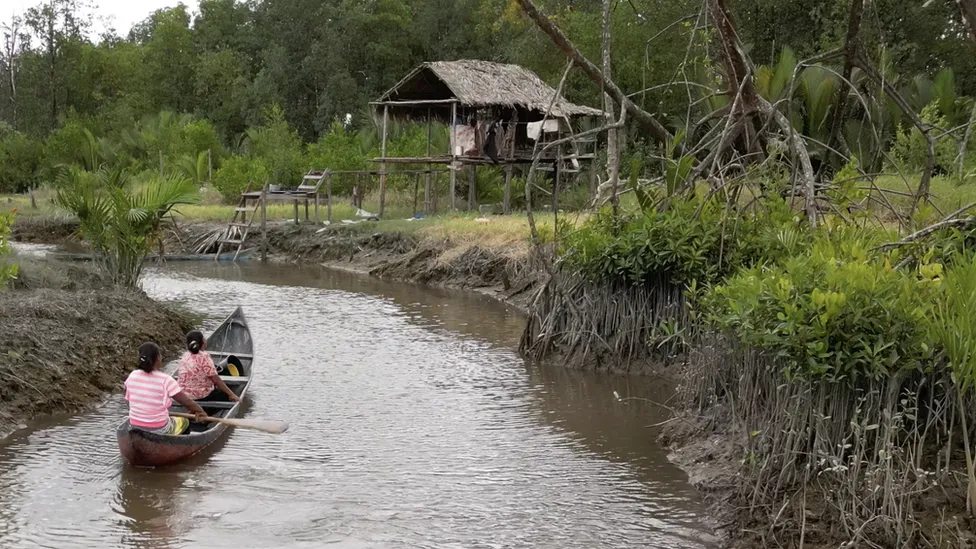In the far northwest borderland of Guyana, nestled along the salty, silty waters of Smith Creek, approximately 300 people reside in a cluster of weathered cabins raised on wooden stilts. Amidst the muddy banks, a lively group of young children, some scantily clad, frolic, while traditional canoes, crafted from single tree trunks, ferry families and provisions. Yet, despite being situated in this remote locale, where access to potable water requires hours of paddling, the burgeoning economic growth of Guyana seems distant.
Smith Creek remains untouched by the burgeoning oil wealth that has positioned Guyana as one of the globe’s fastest-growing economies. Although the Stabroek Block subsea reserve harbors an estimated eleven billion barrels of oil, the dividends of this resource remain elusive to the residents of Smith Creek, who rely on fishing, farming, and the remittances of those toiling in distant gold mines for sustenance.
Nevertheless, glimmers of transformation are emerging within Smith Creek. Amidst the rustic landscape stands a newly erected concrete structure adorned with solar panels and equipped with specialized food processing machinery—a testament to the community’s newfound endeavor. Here, a collective of indigenous Warrau women cultivates and harvests prized Wiri Wiri peppers, marking their foray into commercial enterprise and securing a semblance of economic autonomy previously unknown to them.
Evonnedy Wells, the lead cultivator, emphasizes the project’s significance, noting its impact on the community’s well-being. “Women can buy things for their children and family,” she explains, highlighting the newfound opportunities the initiative has afforded.
Annette Arjoon, a coordinator of the pepper project, underscores its transformative role in providing income and supplementing traditional livelihoods. As she navigates the challenges faced by the community, she reflects on the tangible difference the project has made.
Moreover, amidst this remote backdrop, the strategic importance of the surrounding terrain has gained prominence in recent times. With Smith Creek marking the juncture of Guyana’s Essequibo region and the Venezuelan border, geopolitical tensions simmer. President Nicolás Maduro’s vocal assertions of Venezuela’s claim to Essequibo have injected uncertainty into the region, where the Barima River delineates a tenuous boundary between the two nations.

